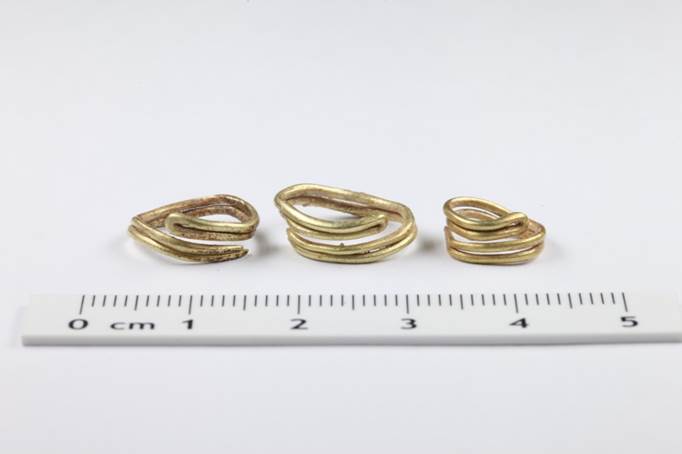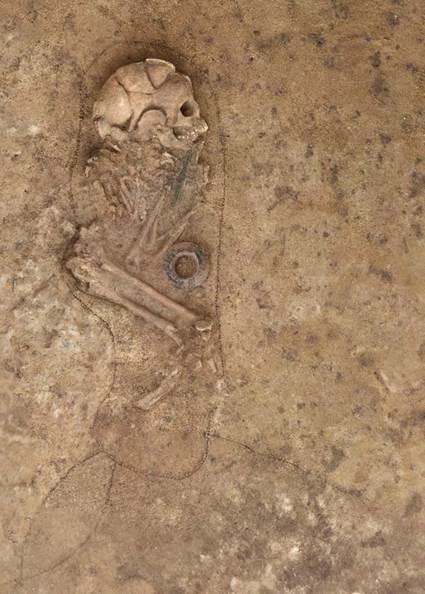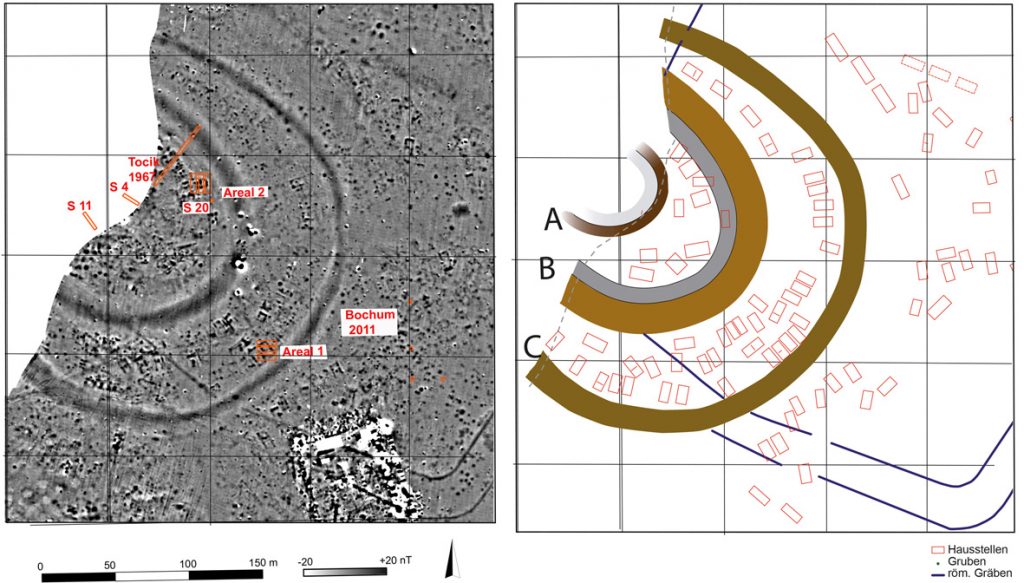The early Bronze Age settlement near the town of Vráble in Slovakia is remarkable for its size – approx. 12 ha – and for a mighty earthwork fortification consisting of a timber-laced embankment and a ditch 5 m deep and 16 m wide. In the period of its maximum extension it can be assumed that about 12 to 15 social groups – possibly family units of 40 to 80 persons each – lived in the settlement (altogether approx. 1,000 people).

The region around Vráble was an important contact zone between various central and south-eastern European cultures in the Bronze Age and is therefore of great interest. Furthermore, the settlement lies near the Carpathians, which are known for their large gold, copper and tin deposits, and it may therefore supply information on the influence of metallurgy on early and middle Bronze Age communities on the north-west fringe of the Carpathian basin.

Since 2009 a team from the DAI’s Roman–Germanic Commission in collaboration with the Slovak Academy of Sciences has been carrying out extensive prospecting and excavation there to gather further data on the size, structure and duration of the settlement and on the dimensions of the nearby burial ground.

Houses, settlement pits, the remains of the defensive earthworks and graves have been investigated using high-definition geomagnetic imagery and subsequently excavated. It turns out that the settlement shrank considerably following a catastrophic fire. How long it then existed and when it was abandoned is still unclear.